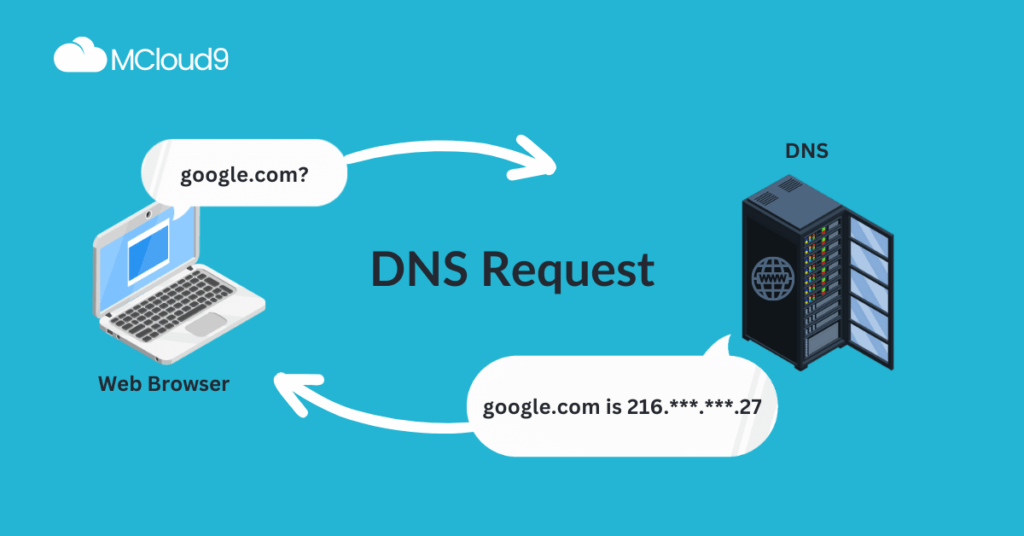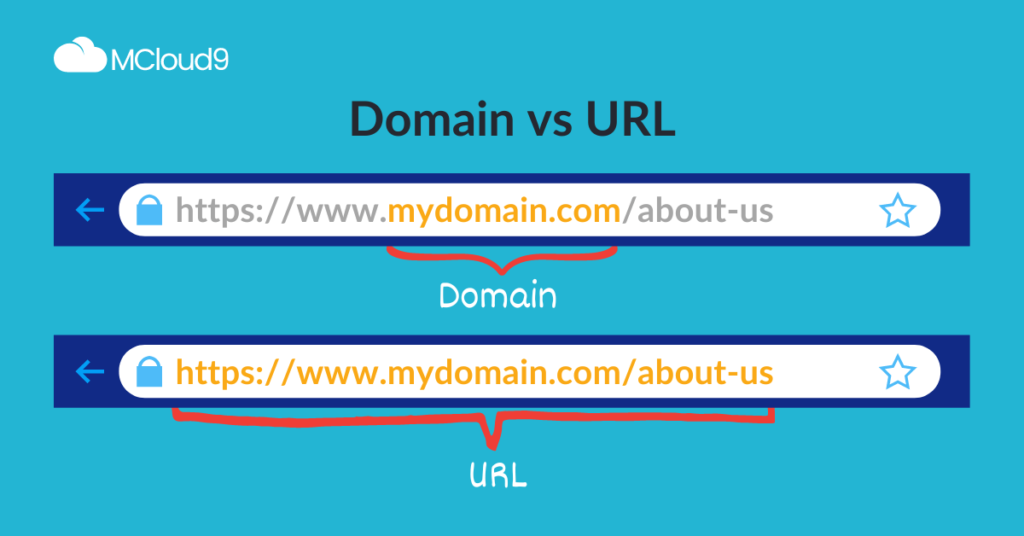In today’s digital age, having an online presence is vital for businesses and brands looking to establish a strong online presence. A website domain name is an integral component of any website, and its importance cannot be overstated. But what is a domain name, and how does it work?
When you first hear the term “domain”, you might be thinking of a physical area (the queen’s domain), or a field of expertise (“I know nothing about ballet, that’s my sister’s domain”). In the internet and web hosting world, however, the word domain refers to where a website lives: its address.
This article aims to provide a comprehensive introduction to what website domains are, where they come from and how they work. We’ll cover the purpose of a domain name, the different domain types, and how to get a domain name. Whether you’re an entrepreneur looking to start a new business or a web developer looking to brush up on your domain knowledge, this article is for you.
Table of Contents
What Is a Website Domain Name?
A website domain name is the address of a website, more specifically, it is the human-readable address that identifies a website on the internet. For example, news24.com and facebook.com are domain names. Imagine the internet is a giant city with lots of buildings. Each building has its own unique address, like your house or apartment. A domain is like the address of a building. It tells the browser where to find a specific website on the internet.

A domain name consists of two parts: the top-level domain (TLD) and the second-level domain (SLD). The TLD is the part that comes after the dot (e.g., .com, .co.za, .org, .net), while the SLD is the part that comes before the TLD (e.g., google, news24, facebook).
A Brief History of Domain Names
Before website domain names were introduced, in the early stages of the World Wide Web, websites were identified using their Internet Protocol (IP) address: a unique numerical code that identifies a specific device on the internet. However, IP addresses are difficult to remember and prone to typo errors, which led to the introduction of domain names.
To solve this problem, the Domain Name System (DNS) was introduced in the 1980s to allow visitors to easily remember and access websites using domain names. DNS servers translate domain names into their corresponding IP addresses, allowing visitors to access the website. Thank goodness for DNS!
What Is the Purpose of a Domain?
As mentioned in the previous section, one of the main purposes of a website domain name is to make it easier for people to access websites. Instead of having to remember a long string of numbers, you can remember an easy name and type into your web browser. Domains also offer several advantages, including:
- Search Engine Optimisation (SEO): Having a website domain name that’s related to your website’s content can help improve your search engine rankings.
- Trustworthy: A domain name can make your website look more professional and credible.
- Brandable: A website domain name can help you establish your brand online.
- Professional email addresses: With your own custom domain name, you can create professional email addresses for your business or personal use (e.g. [email protected]).
How Do Domains Work?
When you type a website domain name into your web browser, your computer sends a request to a Domain Name System (DNS) server to translate the domain name into an IP address. The name server looks up the IP address associated with the domain name. Once the DNS server finds the IP address, it sends the request to the web server hosting the website, which then sends the website’s content back to your browser.

The Internet Corporation for Assigned Names and Numbers (ICANN) is responsible for managing the DNS server and ensuring that website domain names are unique and registered correctly. In South Africa, the ZA Central Registry (ZACR) is the organisation responsible for managing the .co.za domain space.
The Difference Between a Domain Name, URL, and Website
While related, a domain name, URL, and website are three distinct components that work together to create a seamless browsing experience for visitors.
- Domain: Think of a website domain name as the street address of a physical location. It’s a unique name that helps people find a particular website (e.g. mydomain.com).
- URL: If a domain name is like the street address of a physical location, then the URL is like the directions to the location. A URL can also be referred to as a web address. It’s the specific path that visitors take to get to a particular page or resource on the website (e.g. “https://www.mydomain.com/about-us”). The typical components of a URL include a protocol, domain name, and path.
- Website: If the URL is the directions to the location of a domain name, then the website itself is like the building at that location – it’s where the content and information that visitors are looking for are stored and displayed.

So while they are all related to the same overall concept of online browsing, a domain name, URL, and website each serve their own unique purpose in helping visitors find and access the information they need on the internet.
Different Types of Domains: Top-level Domains (TLD), ccTLD, and More
When choosing a website domain name, you need to think about the type of domain extension you want to have. This is also known as the top-level domain (TLD). TLDs are the highest level of domains. There are various TLDs available for websites. The most common types include:
- Generic top-level domains (gTLDs): These are the most common type of TLDs and are not specific to any country or region, such as .com, .net, .org, .biz, .info, or .xyz.
- Country-code top-level domains (ccTLDs): These domains are specific to a particular country or region, such as .co.za for South Africa, .us for the United States, or co.uk for the United Kingdom. Learn more about ccTLDs.
- Sponsored top-level domains (sTLDs): Sponsored TLDs are reserved for specific industries or organisations and usually require applicants to meet specific criteria to register. Examples include .gov for government agencies, .edu for educational institutions, and .mil for military organisations.
Other domain types include:
- Second-level domains (SLD): The second-level domain refers to the section of the domain name that comes before the top-level domain (TLD). For example, in the domain name “google.com,” “google” is the SLD and “.com” is the TLD.
- Subdomains: The subdomain refers to the section of the domain that comes before the second-level domain (SLD) and is separated by a dot. For example, in the domain name “blog.google.com,” “blog” is the subdomain. Subdomains can also be referred to as third-level domains.
Knowing the different domain types available can help you choose the right domain for your business or brand. There are hundreds of TLDs available, you can view a list of all valid top-level domains by the Internet Assigned Numbers Authority (IANA).
Registering a Domain Name (Domain Name Registration)
To register a domain name, you’ll need to use a domain registrar. A domain registrar is a company that manages the registration of website domain names on the internet. The domain registration process can be done online and only takes a few minutes.

Once you have found a domain registrar, you will need to choose a name that is available and decide on the extension you want to use. Check out our guide for tips on choosing a great domain name. You can search for available domain names by entering a domain name in the domain search field (make sure to enter a valid domain name extension). Use the domain search tool below to see if your desired name is still available. Once you have found your website domain name, you can purchase it and set up your website. You will also need to provide some basic information about yourself or your business, such as your name, address, and contact information.
Domain Name Search
Instantly search domain name availability
If you want to set up a website you will need to get web hosting with your specific domain name. Once you have registered your website domain name and purchased your hosting you will need to set up DNS records to point your domain name to your web hosting provider. If you have purchased the domain and hosting from the same provider then this should be done automatically for you. If you plan on buying a domain with hosting, some domain name registrars and web hosting providers offer a free domain name when you purchase a hosting package with them.
Transferring a domain name is a similar process, but instead of purchasing a new domain name, you’ll transfer ownership of an existing website domain name from one registrar to another.
With MCloud9, you can transfer a domain from any registrar.
In Conclusion
A website domain name is a crucial aspect of any website or online business. It is the human-readable web address that people use to find your website, and it helps establish your online identity.
If you are thinking of starting a new business or online brand, make sure to register your domain name now to secure it before someone else does. This will ensure that your domain name is reserved for you and can’t be taken by someone else. A domain name is a valuable asset for your business, with a unique domain name, you can establish your online presence and start building your brand.
We hope this beginner’s guide has helped you learn what a domain name is and how it works. Understanding how domains work and the different types available can help you make informed decisions about your online presence. By choosing the right domain name for your website, you can make it easier for people to find and access your content online. It is important to choose a domain name that is easy to remember, easy to spell, and relevant to your business or brand.


